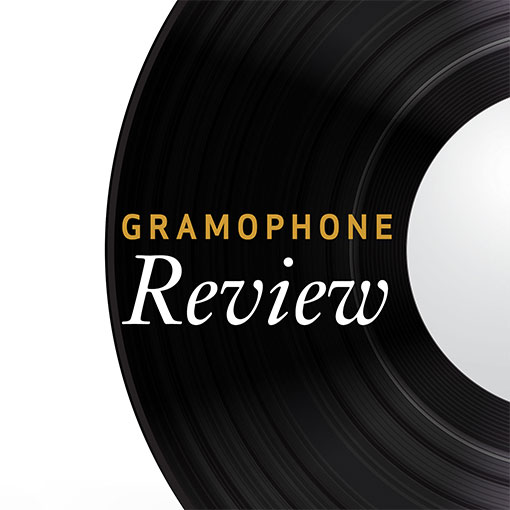Bellini (La) Sonnambula
Bartoli and Flórez paired for the first time in the ultimate bel canto vehicle
View record and artist detailsRecord and Artist Details
Composer or Director: Vincenzo Bellini
Genre:
Opera
Label: L'Oiseau-Lyre
Magazine Review Date: 2/2009
Media Format: CD or Download
Media Runtime: 134
Mastering:
Stereo
DDD
Catalogue Number: 478 1087DHO2

Tracks:
| Composition | Artist Credit |
|---|---|
| (La) Sonnambula |
Vincenzo Bellini, Composer
Alessandro De Marchi, Conductor Cecilia Bartoli, Amina, Soprano Gemma Bertagnolli, Lisa, Soprano Ildebrando D'Arcangelo, Rodolfo, Baritone Javier Camarena, Notary, Tenor Juan Diego Flórez, Elvino, Tenor La Scintilla Orchestra, Zurich Liliana Nikiteanu, Teresa, Soprano Peter Kálmán, Alessio Vincenzo Bellini, Composer Zurich Opera House Chorus |
Author: po'connor
The problem with La Sonnambula is the lack of action during the first hour. The characters introduce themselves in arias and duets but nothing happens, the only hint of drama being provided by the arrival of the Count, the new master of the castle (the title of Scribe’s ballet scenario on which Romani based the libretto is L’arivée d’un nouveau seigneur). The bass aria “Vi ravisso” became a great favourite with Victorian soloists, and it is given an elegant performance here by Ildebrando D’Arcangelo. The other significant subsidiary role is that of Lisa, the flirty innkeeper, and Gemma Bertagnolli sings both her arias with spirit. Sonnambula, though, stands or falls on the bel canto expertise of its two main protagonists, and on this occasion they are both in great form. Bartoli’s decorations in the second verse of “Sovra il sen la mano”, the cabaletta of her entrance aria, are delivered in that typical, slightly hushed “confidential” manner of hers. De Marchi lets her have a rallentando towards the end, with a couple of dips down into the contralto range that make about as extreme a contrast as possible with the brilliant effects above the stave that Callas, Sutherland and more recently Dessay achieve in their various recordings. The highlight of the first scene, and indeed of the whole recording, is the duet “Son geloso del zefiro” which gives Flórez and Bartoli an opportunity to demonstrate both exquisite piano passagework and some welcome passionate utterance.
It is the ensemble in the second scene of Act 1, “D’un pensiero”, so cunningly parodied by Sullivan in Trial by Jury, that provides the moment of high drama. Flórez is in his element as the apparently betrayed lover, and Bartoli’s distress is convincing, even though she cannot quite equal – who could? – Callas’s sense of outrage as she realises her predicament. In Act 2 Florez sings the vehement aria “Ah! perchè non posso odiarti” with all his accustomed vigour.
What, though of the most famous passage in the whole opera, the sleepwalking aria, “Ah, non credea”? This was recorded by Adelina Patti herself back in 1906, and for many collectors this remains the touchstone. Among modern sopranos in my experience only Renata Scotto came near to equalling the simplicity and pathos of Patti’s interpretation. Scotto, interestingly, chose Claudia Muzio’s recording as her own favourite, and the much darker quality of Muzio’s voice is nearer in timbre to the mezzo for whom Bellini was writing, and indeed to Bartoli in this set. In her recent embrace of the 19th-century repertory and her devotion to the roles sung by Maria Malibran (who performed Amina in English at Drury Lane in 1832), Bartoli has somewhat altered her approach and here achieves a new directness. She maintains a beautiful line throughout the aria, without any intrusive “expressive” elements that can sometimes distort this, perhaps the ultimate Bellinian cantilena. “Ah, non giunge” is joyful, with many pretty decorations – of course no one can equal Sutherland in this, one of her greatest show pieces – but the quieter atmosphere here is in keeping with the whole conception of this, very much a new view of La Sonnambula. It is one which I have greatly enjoyed listening to. I won’t be disposing of the 1962 Sutherland-Bonynge set, and of Callas’s recordings, although it is in poor sound, I think I would generally prefer the 1955 live La Scala version conducted by Bernstein.
Discover the world's largest classical music catalogue with Presto Music.

Gramophone Digital Club
- Digital Edition
- Digital Archive
- Reviews Database
- Full website access
From £8.75 / month
Subscribe
Gramophone Full Club
- Print Edition
- Digital Edition
- Digital Archive
- Reviews Database
- Full website access
From £11.00 / month
Subscribe
If you are a library, university or other organisation that would be interested in an institutional subscription to Gramophone please click here for further information.





